Where to buy Omega 2?
Less
There are no classified ads for this product.
Tech. sheet
- Manufacturer: Studio Electronics
- Model: Omega 2
- Category: Analog Synth Racks/Sound Modules
- Other names:omega 2, omega2
We have no technical specifications for this product
but your help will be much welcomed
»
User reviews
5.0/5(1 reviews)
5
100 %
4
3
2
1
a reference
Published on 01/16/12 at 03:01 (This content has been automatically translated from French)Refer to the general characteristics and detailed info page of the product.
UTILIZATION
It does not have a control panel that Andromeda is as complete, but it is not a handicap. Its ergonomics are quite satisfactory.
SOUNDS
Excellent. See my opinion below.
OVERALL OPINION
Few reminders in the introduction to this opinion.
Like all products in Studio Electronics, oscillators and filters Omega models are made using discrete electronic components (not the envelope or the LFO). They are equipped with a MIDI interface that provides access to the bulk via CC, which makes modern machines, able to take place in any configuration today. The Omega series comes in the form of a 4U...…
UTILIZATION
It does not have a control panel that Andromeda is as complete, but it is not a handicap. Its ergonomics are quite satisfactory.
SOUNDS
Excellent. See my opinion below.
OVERALL OPINION
Few reminders in the introduction to this opinion.
Like all products in Studio Electronics, oscillators and filters Omega models are made using discrete electronic components (not the envelope or the LFO). They are equipped with a MIDI interface that provides access to the bulk via CC, which makes modern machines, able to take place in any configuration today. The Omega series comes in the form of a 4U...…
Read more
Refer to the general characteristics and detailed info page of the product.
UTILIZATION
It does not have a control panel that Andromeda is as complete, but it is not a handicap. Its ergonomics are quite satisfactory.
SOUNDS
Excellent. See my opinion below.
OVERALL OPINION
Few reminders in the introduction to this opinion.
Like all products in Studio Electronics, oscillators and filters Omega models are made using discrete electronic components (not the envelope or the LFO). They are equipped with a MIDI interface that provides access to the bulk via CC, which makes modern machines, able to take place in any configuration today. The Omega series comes in the form of a 4U rack (there is a 2U version, the Omega 2 SM - it is not possible to add channels). Omega all models have the same architecture (including the Omega SM 2). Only the number of lanes change (from 2 to 8) and the number of patch presets (4 banks of 128, except for Omega 2 SM which has only two banks of 128 - for multi, it's 128 for all models). The Omega Series models are all polyphonic synthesizers, multi-timbral.
3 important things to note about Omega models:
Omega + Series offers a standard 2 filters per channel (which is the case for many models at Studio Electronics), a 24 dB per octave Moog type and a 12bd per octave multi-mode type Oberheim SEM. on the other hand, unlike models ATC-X or SE-1X, the filter offers 12bd well as SEM, 4 modes (LP, BP, HP and BR). Omega on all models (including the Omega SM 2), it can be added to each channel, two additional filters from TB303, ARP2600 and CS80. All filter mix are possible. As against it is not possible to make them work in series or in parallel.
Omega + models have two oscillators, but unlike models ATC-X, a sub-oscillator is available on the VCO 1.
+ The series has Omega 3 LFO per channel. LFO 3 is assigned to each panoramic road that has its own stereo output (as well as an audio input).
What about the price of these machines? Because of their construction is, for the most important parts of his generation on discrete electronic components, these machines are rather expensive. Prices for a nine Omega in Europe range from about € 3200 for the 4-way € 4800 for 8 channels (mono models like the ATC-X or SE-1X are in the range of 1400 to 1600 € in nine - around 800 to 1000 € in hand). 2-way model large frame is for the US $ 2,400 (you've got to open a savings plan if you take this option in hopes of adding lanes later, as the purchase of track is separately not given - the way to $ 475 USD).
Has it value for money with an Omega? The testimonials and comparisons are numerous and are still out that this synthesizer is capable of producing very good sound. Having owned a few myself analog synthesizers (6 Juno, Jupiter 6, Oberheim Matrix 1000, Waldorf Pulse, Tetra DSI, SE-1X, Andromeda - I've always), I confirm. Excellent in Lead, low, sounds torture of any kind, capable of giving 'sweep' beautiful, an Omega, it's scary. Even with a modest Omega 2 (I have), it's worth it. It can do many things very well (who has a crush on the very large and very expensive mini Moog, think about it), especially with 2-way, you can stack two patches or simply operate in unison , making it a much better product (in my opinion) that the pure mono brand products (the price difference is not so great if you think about it - ATC 2-X 2 or SE-1X, c is much more expensive).
In conclusion, if you have the opportunity to put an Omega on your menu, it's worth it.
UTILIZATION
It does not have a control panel that Andromeda is as complete, but it is not a handicap. Its ergonomics are quite satisfactory.
SOUNDS
Excellent. See my opinion below.
OVERALL OPINION
Few reminders in the introduction to this opinion.
Like all products in Studio Electronics, oscillators and filters Omega models are made using discrete electronic components (not the envelope or the LFO). They are equipped with a MIDI interface that provides access to the bulk via CC, which makes modern machines, able to take place in any configuration today. The Omega series comes in the form of a 4U rack (there is a 2U version, the Omega 2 SM - it is not possible to add channels). Omega all models have the same architecture (including the Omega SM 2). Only the number of lanes change (from 2 to 8) and the number of patch presets (4 banks of 128, except for Omega 2 SM which has only two banks of 128 - for multi, it's 128 for all models). The Omega Series models are all polyphonic synthesizers, multi-timbral.
3 important things to note about Omega models:
Omega + Series offers a standard 2 filters per channel (which is the case for many models at Studio Electronics), a 24 dB per octave Moog type and a 12bd per octave multi-mode type Oberheim SEM. on the other hand, unlike models ATC-X or SE-1X, the filter offers 12bd well as SEM, 4 modes (LP, BP, HP and BR). Omega on all models (including the Omega SM 2), it can be added to each channel, two additional filters from TB303, ARP2600 and CS80. All filter mix are possible. As against it is not possible to make them work in series or in parallel.
Omega + models have two oscillators, but unlike models ATC-X, a sub-oscillator is available on the VCO 1.
+ The series has Omega 3 LFO per channel. LFO 3 is assigned to each panoramic road that has its own stereo output (as well as an audio input).
What about the price of these machines? Because of their construction is, for the most important parts of his generation on discrete electronic components, these machines are rather expensive. Prices for a nine Omega in Europe range from about € 3200 for the 4-way € 4800 for 8 channels (mono models like the ATC-X or SE-1X are in the range of 1400 to 1600 € in nine - around 800 to 1000 € in hand). 2-way model large frame is for the US $ 2,400 (you've got to open a savings plan if you take this option in hopes of adding lanes later, as the purchase of track is separately not given - the way to $ 475 USD).
Has it value for money with an Omega? The testimonials and comparisons are numerous and are still out that this synthesizer is capable of producing very good sound. Having owned a few myself analog synthesizers (6 Juno, Jupiter 6, Oberheim Matrix 1000, Waldorf Pulse, Tetra DSI, SE-1X, Andromeda - I've always), I confirm. Excellent in Lead, low, sounds torture of any kind, capable of giving 'sweep' beautiful, an Omega, it's scary. Even with a modest Omega 2 (I have), it's worth it. It can do many things very well (who has a crush on the very large and very expensive mini Moog, think about it), especially with 2-way, you can stack two patches or simply operate in unison , making it a much better product (in my opinion) that the pure mono brand products (the price difference is not so great if you think about it - ATC 2-X 2 or SE-1X, c is much more expensive).
In conclusion, if you have the opportunity to put an Omega on your menu, it's worth it.
See less
131
»
Other Studio Electronics analog Synth Racks/Sound Modules
-
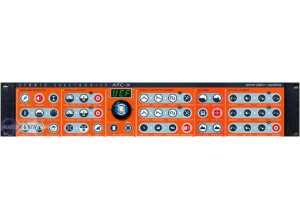
ATC-X
Analog Synth Rack/Sound Module
-
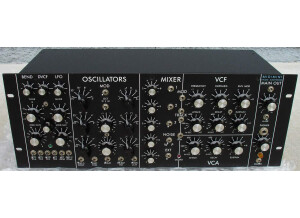
MidiMini
Analog Synth Rack/Sound Module
-
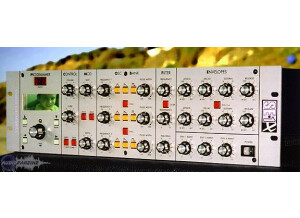
SE-1X
Analog Synth Rack/Sound Module
-
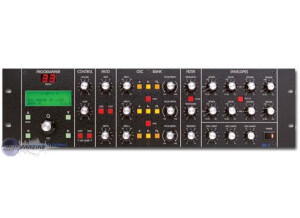
SE-1
Analog Synth Rack/Sound Module
-
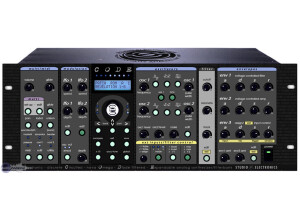
Code
Analog Synth Rack/Sound Module
-
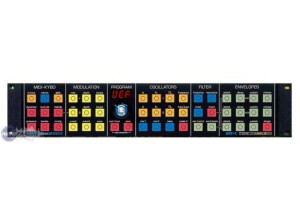
ATC-1
Analog Synth Rack/Sound Module
-
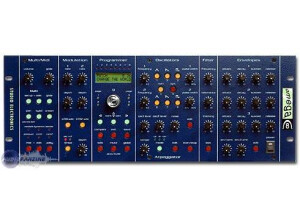
Omega 8
Analog Synth Rack/Sound Module
-
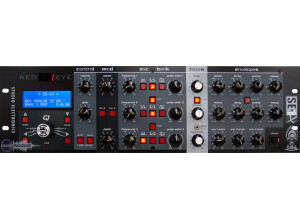
SE-1X Nova - Red Eye Edition
Analog Synth Rack/Sound Module
-

SE-1X Nova - Angel Dust Edition
Analog Synth Rack/Sound Module
-
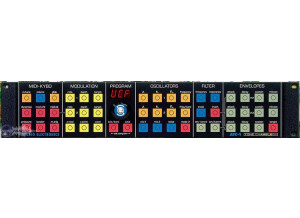
ATC1X
Analog Synth Rack/Sound Module
Other categories in Synthesizers/Racks/Modules
Where to buy Omega 2?
Less
There are no classified ads for this product.









